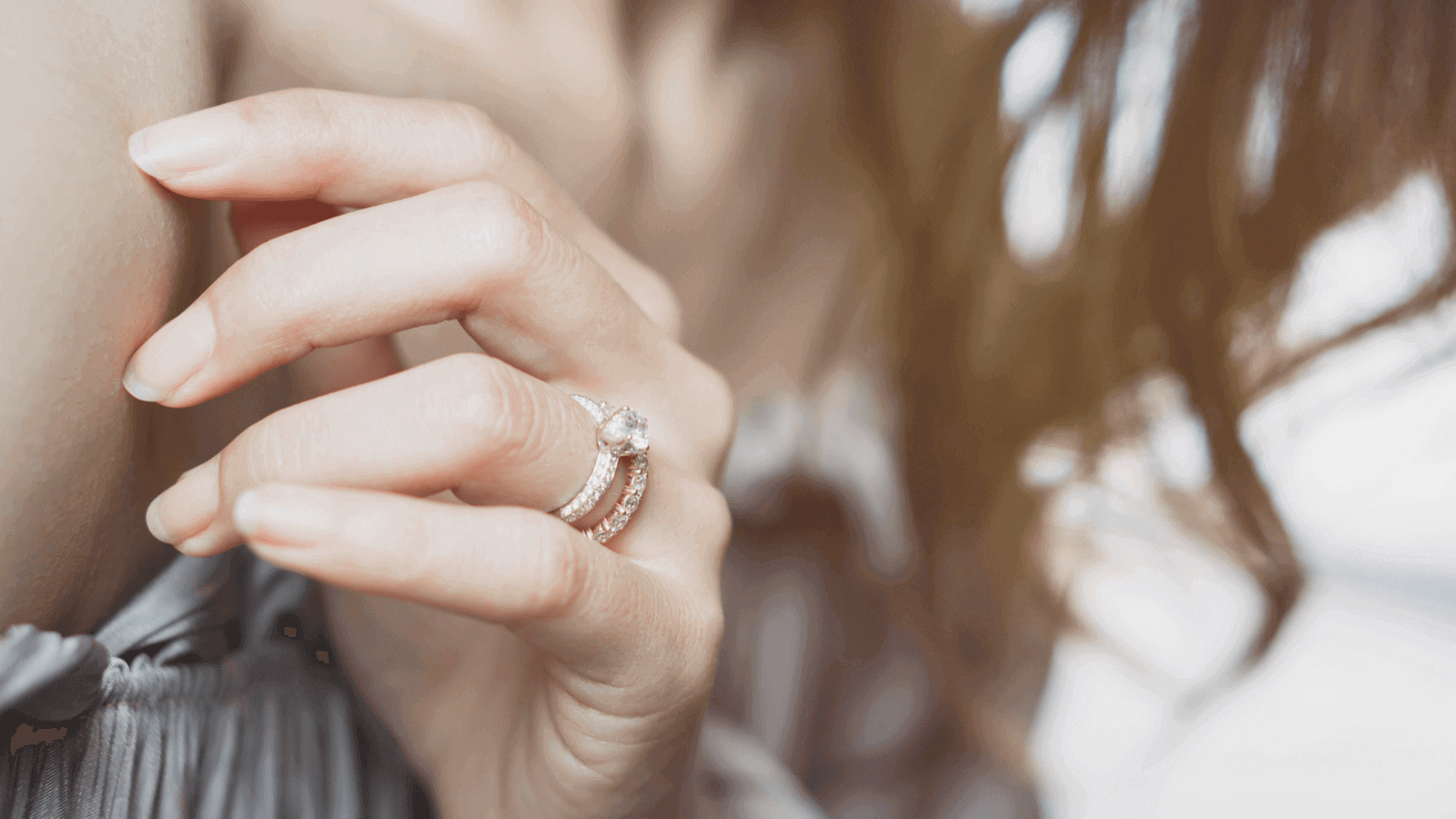Whether you have just recently gotten engaged, plan to be, or have already taken that walk down the aisle, you may be wondering how you are supposed to be wearing your wedding band and engagement ring.
With so many different traditions and mixed information, what is the proper way, and where do these traditions come from?
Wedding and Engagement Ring Traditions
To keep it simple and in alignment with most traditions, your engagement ring should be worn on the left hand, on the fourth finger (or ring finger, as it is aptly called!) until your wedding day. On your wedding day, you slip your wedding band closest to your heart (or the inside). And then you can either slide your engagement ring on again to stack, place it away for safekeeping and special occasions, or have the two soldered together (if they were purchased as a set or they are complimentary). Some brides may choose not to wear their engagement ring to the wedding ceremony at all, so the focus can be on their wedding band alone.
Beyond the tradition, there are dozens of different ways you wear your wedding band and engagement ring, according to your preferences and style.
Some may choose to wear their engagement ring on their right hand, and their wedding band on their left hand. But the symbolism of wearing your wedding band on the fourth finger on your left hand seems to be the most enduring, and here’s why:
The ancient Egyptians, over 4,800 years ago, believed that there was a vein on the fourth finger of your left hand that ran directly to your heart. The ancient Greeks and Romans also held similar beliefs, and this tradition has endured ever since. The concept of wedding bands dates back to the middle ages. Everything from wood to bone has been used to symbolize the union between two individuals, families, communities, and even nations, and it’s no wonder why this custom continues on to the present day.
Modern Spins on Traditional Rings
If you choose to purchase a bridal set, chances are you have an engagement ring and wedding band that not only complement one another; they may even nest or interlock together in a beautiful or meaningful way. After your wedding day, you may sell them (or weld) together so that they are one (and often a more sturdy, durable piece), or they may be designed to stack together indefinitely.
As mentioned earlier, some may choose to wear their engagement ring on their right hand, not at all, or only for special occasions. And additionally, you may not choose to wear your wedding ring on your left hand but on your right—or not at all! In fact, in many European countries, wearing your wedding ring on your right hand is traditional by default. Some may choose, as a reflection of their occupation or lifestyle to wear their wedding ring only for special occasions or on a lovely chain around their neck.
At the end of the day, it’s your hand, your love story, your rings, and your choice! Whether you view yourselves as a traditional couple, a little more progressive, or want to pay homage to some of those traditions, there is a perfect engagement ring, wedding band, or bridal set for you, and yours.
Visit any of our convenient locations today to learn more about our wedding and engagement rings from our team of experts.

